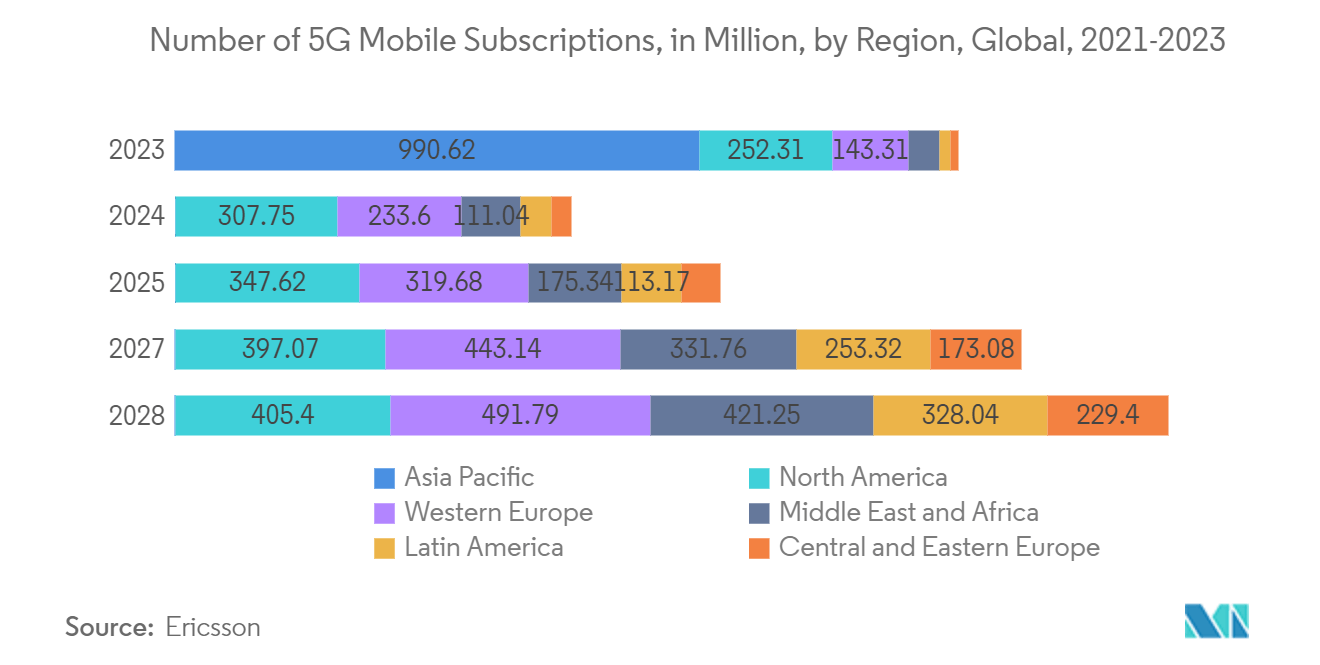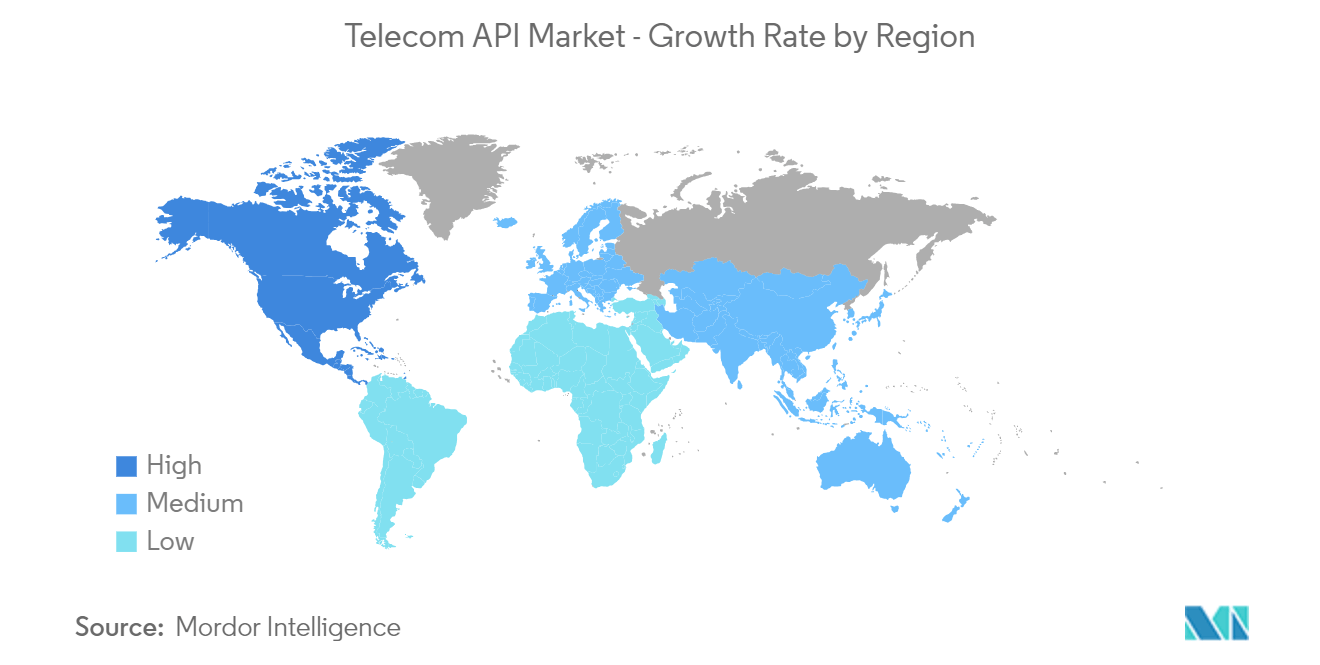Market Trends of Telecom API Industry
Hybrid Segment to Hold Considerable Market Shares
- Hybrid deployment in the context of telecom APIs refers to a model that combines on-premises infrastructure and cloud services. This strategy allows telecom companies to maintain control over critical systems and data while leveraging the flexibility and scalability of the cloud. Telecom companies often opt for a hybrid approach to comply with regulatory requirements while benefiting from cloud efficiencies. For instance, in April 2023, Google Cloud introduced Anthos Service Mesh, built on Apigee technology, for managing and securing API traffic in hybrid environments.
- The telecommunications sector is significantly transitioning from physical to digital networks. The telecom industry comprises a wide range of consumers who need to be offered a broad spectrum of services, irrespective of their appliances and locations. To cater to this, telecom carriers seek cloud solutions to deliver their services in response to consumer demands.
- This rise in demand for microservices can be considered a sign of the natural evolution of enterprise application development. Technology trends, such as migration to cloud platforms and shifting toward an API economy, are witnessed in the current market scenario. Web-based applications can help service providers in the telecom industry improve the quality and reliability of their mobile communications, broadband services, and open-source technologies, boost their market share, and improve their profitability.
- Focusing on improving the customer experience, telecommunications players are revising microservices architecture (MSA) in their IT and network architectural capabilities to support extensibility and elasticity. The supportive government regulations worldwide encourage telecom players to open their communication systems via APIs. This is expected to promote the growth of middleware architecture solutions across telecommunications business models.
- The Mobile Application Support Environment (MASE) is a distributed system that works on mobile devices and devices known as mobility gateways. The latter act as a bridge between fixed and wireless network infrastructures. It is an agent for mobile clients, often linked over unreliable wireless access networks with limited bandwidth. MASE gives access to the UMTS adaption layer (UAL), which allows unified access to all conceivable underlying networks for applications and middleware components. An additional general support layer provides the functionality required for distributed systems.
- The evolution of cellular network technology has authorized users to experience faster data speeds and lower latency. It has also prompted the rapidly increasing use of data-heavy services and applications. The significant rise in the volume of data carried by cellular networks has been primarily driven by consumer need for video and business and consumer moves to cloud services. This factor is expected to drive the need for a 5G connection that offers fast and high-capacity networks. Moreover, with the introduction of 5G in the coming years, telecom companies are expected to be eager to focus on edge computing solutions, which would be enabled by middleware architecture vendors. According to the Ericsson Mobility Report released in November 2023, 5G mobile subscriptions were anticipated to exceed 5.3 billion by the end of 2029.
- Various players are investing in hybrid solutions as they offer a flexible approach, allowing telecom companies to blend the benefits of on-premises and cloud-based solutions. This also enables them to meet varying compliance requirements, security concerns, and scalability needs. For instance, in February 2024, NTT DOCOMO INC., Japan's significant mobile operator with more than 89 million subscribers, selected AWS to commercially deploy its nationwide 5G Open Radio Access Network (RAN) in Japan. AWS supports DOCOMO in developing its 5G Core on AWS, which runs in a hybrid cloud environment.

North America to Hold Significant Market Share
- The region is significantly driving market growth mainly due to its early and widespread adoption of API technologies. Rapid technological innovations, along with the increasing penetration of cloud-based services across the telecom sector, are expected to drive the growth of the telecom API market. For instance, in February 2023, telecom operators planned to invest an average of USD 206 million per year for the next three to five years in the technologies required for the telco cloud transformation programs to support their mobile network strategies.
- The region comprises the United States and Canada. A significant number of mobile network operators are already leveraging telecom APIs to sustain robocall detection and unwanted call management in the United States. Some of these same processes and procedures will become bridges toward the mediation of LoT network authentication and authorization. According to the International Telecommunication Union, in 2023, the number of mobile subscriptions in the Americas region totaled over 1.14 billion.
- Recently, to create safe 5G network slicing and enhance Canada's security and defense, the University of Waterloo announced the creation of the "5G and Beyond" mobile network technology collaboration. The organization has received funding from the Department of National Defense (DND) for its Innovation for Defense Excellence and Security (IDEaS) program. A group of computer scientists from the University of Waterloo is leading the multi-partner consortium. It will cost CAD 1.5 million (USD 1.12 million).
- In addition, according to GSMA, in 2023, 5G connections accounted for 34% of all mobile connections in Canada, and they are expected to reach 49% by 2025.
- Furthermore, government initiatives aimed at improving digital connectivity and supporting innovation in telecommunications drive the demand in the market. Funding programs and incentives may encourage the deployment of telecom networks nationwide. In April 2023, Ericsson invested more than CAD 470 million for the next five years jointly with the government of Canada in the research and development (R&D) of next-generation technologies such as artificial intelligence, 5G advanced, 6G, Cloud RAN, and core network.
- With the rising demand for cost-effective and user-friendly browser-based communication solutions, many notable vendors are looking to introduce vertical-specific WebRTC and cloud solutions in the region, which is expected to boost the market's growth.
- Canada's facilities-based telecommunications service providers, the companies that build and operate Canada's telecommunications networks, are focused on ensuring investments in network infrastructure and operations, resulting in incredibly resilient networks in the face of intensified network traffic and altered usage patterns, further propelling the telecom API market.


